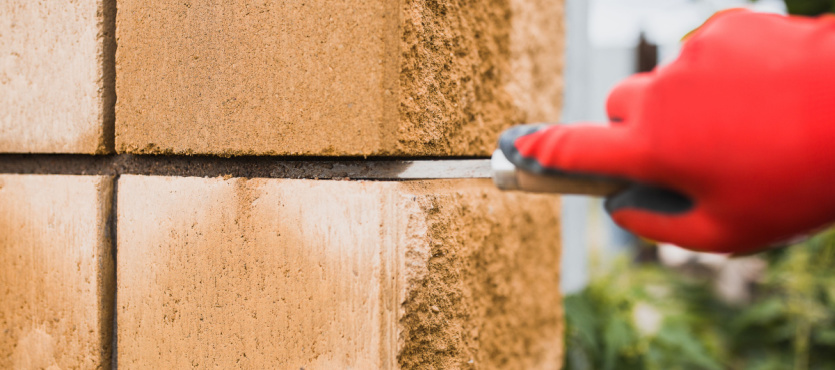While brick-and-mortar buildings are exceptionally durable and can last a long time, they require periodic maintenance to preserve their structural integrity and ensure the brick-and-mortar does not deteriorate into a potentially hazardous state. Whether you wish to preserve a historic building or repair an aging home, ensuring the structural integrity of a building is essential for everyone’s safety.
One way to address crumbling masonry structures is by tuckpointing, which is the process of repairing or refilling aging mortar joints in brick structures that are beginning to deteriorate or show signs of crumbling. While this procedure is typically best left in the hands of professional masons, it is still possible to do it on your own. Here are five easy steps for working on your next tuckpointing project.
Extract Old Mortar And Prepare The Joints
Before you start placing new mortar into the joints, you need to remove the crumbling mortar and prepare the joints. Using a grinder and chisel, cut away and remove the loose mortar to about 3/4 inch, but be careful not to cut into the brick. You can then use a stiff-bristled brush to sweep away loose mortar and dust and wet the area by dipping it in a bucket of water.
Prepare The New Mortar
Once you have removed the old mortar and prepared the joints, your next step is to prepare a fresh batch of mortar to begin tuckpointing. Use a small amount of mortar and mix it with water according to the directions provided by the manufacturer. While mortar will typically last up to an hour, you may have to periodically add water to keep it usable. After an hour, the mortar will no longer be usable, and you will have to make a new batch.
Insert New Mortar Into The Joints
Using a trowel and tuck pointer, begin working the fresh batch of mortar into the joints. Start with the horizontal joints by sliding some mortar into the open joints with a tuck pointer, then scrape off any excess so the joint is flush with the brick. After working on the horizontal joints, you can begin working on the vertical joints by repeating the same process. Use the trowel to scoop and hold mortar as you press it into the joint with a tuck pointer.
Tool The Joints
Once you have worked the new mortar into the joints, the next step is to tool the joints. Be sure to periodically check the mortar, as it usually begins to stiffen after 30 mins of mixing. You can check by pressing your thumb into the joint to see if it leaves an impression.
If it leaves a deep impression, wait several more minutes before trying again. Once it is hard enough, you can use a masonry jointer that matches the shape of the joints to finish them off. Just be careful to not let the mortar harden too much, or you may have trouble tooling the joints to finish the procedure.
Clean Up And Monitor The Curing
Finally, let the tooled joints sit for about a half hour to ensure it is firm before brushing the joints with a stiff-bristled brush to remove loose mortar and clean the area. You can spray water onto the new area to slow the curing process, and it is often best to keep it moist for up to 3 days. If there is excess mortar that refuses to come off, you can use muriatic acid to remove it after waiting for three days (be sure to wear protective equipment.
While tuckpointing is a procedure you can learn to do on your own, in many cases, it is best to leave it in the hands of professional masons. If you are interested in learning more about tuckpointing or need an expert team’s assistance, contact Turnbull Masonry today. We offer several masonry services, including brick repair, tuckpointing, chimney repair, concrete repair, parging, and more.

